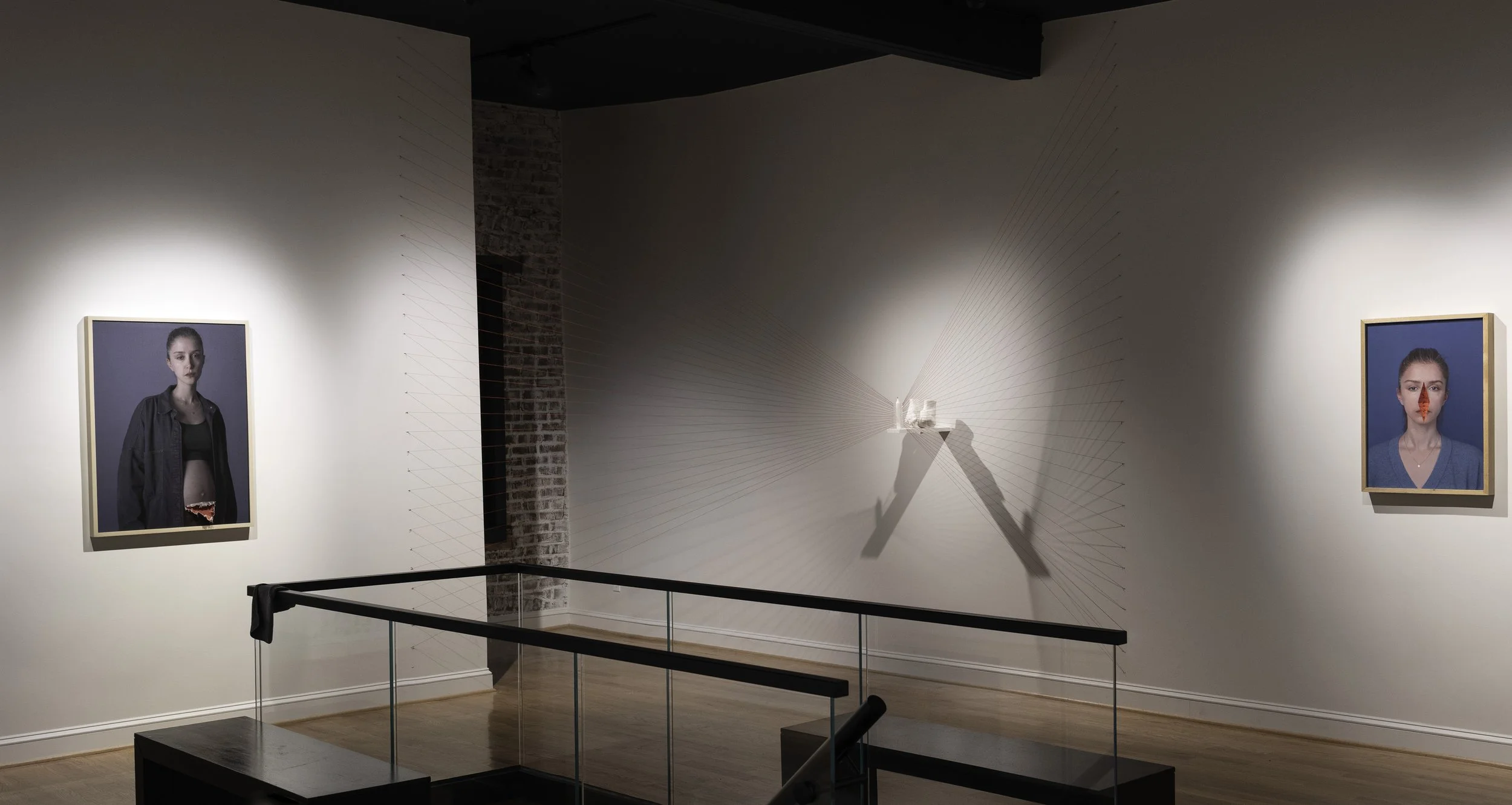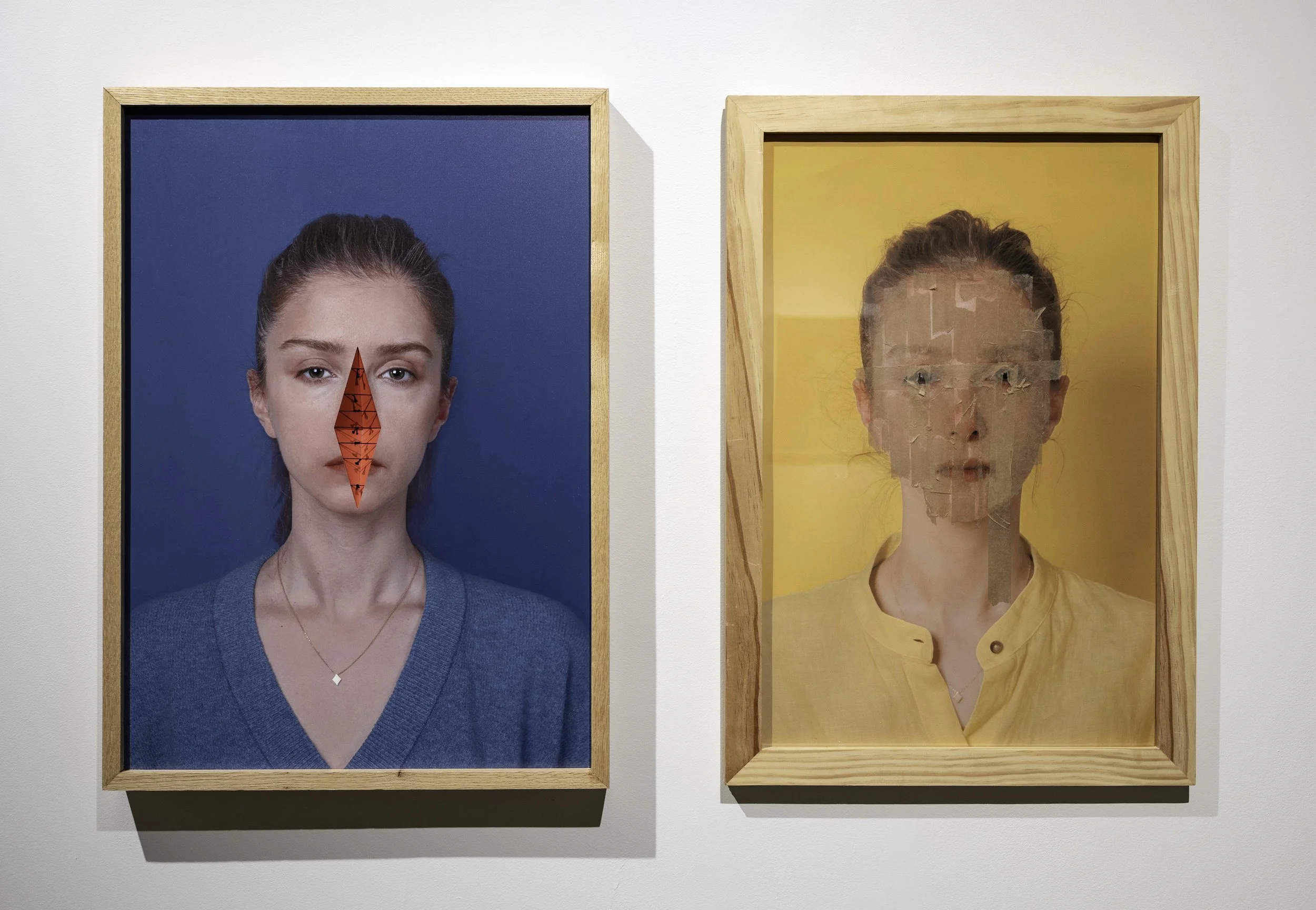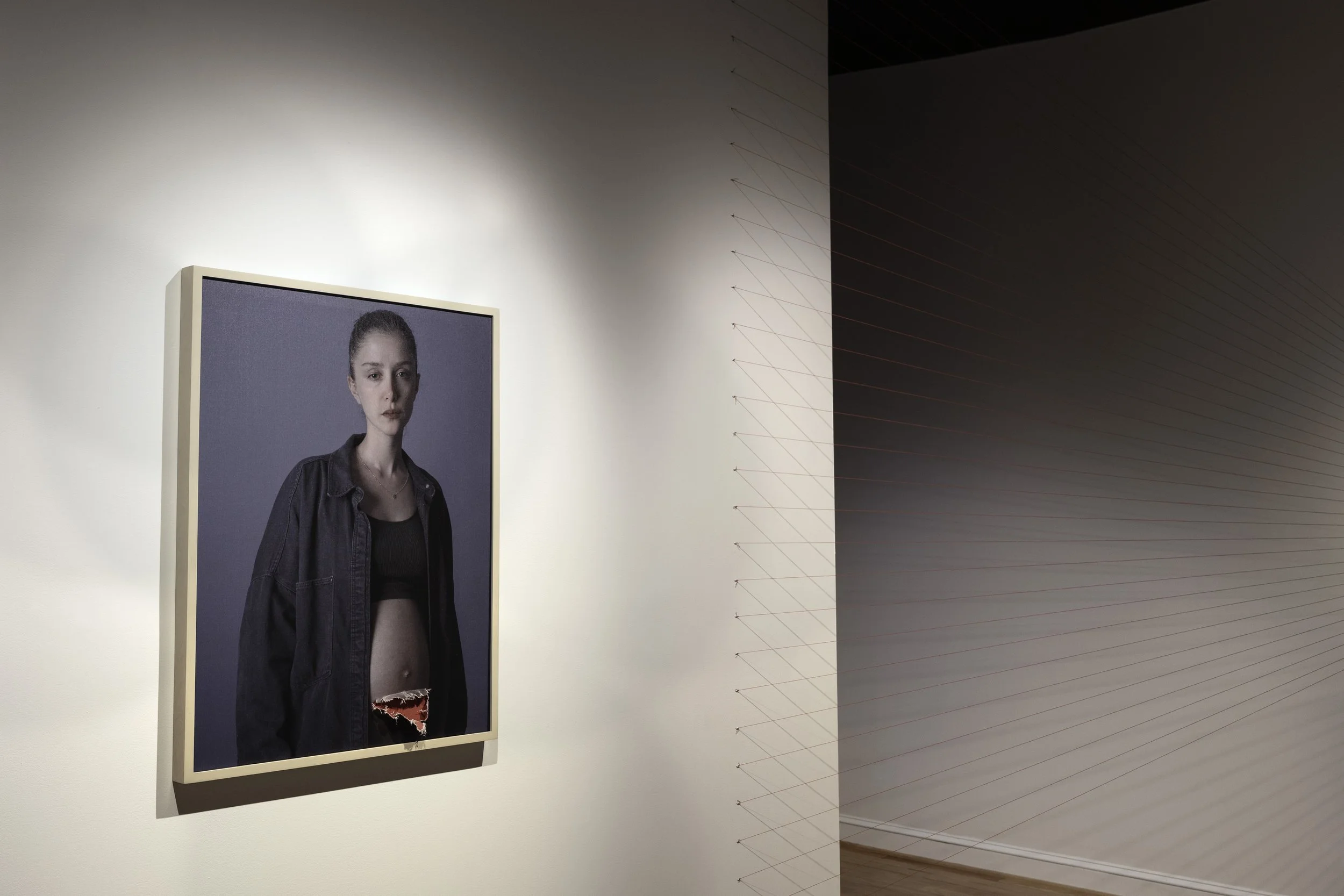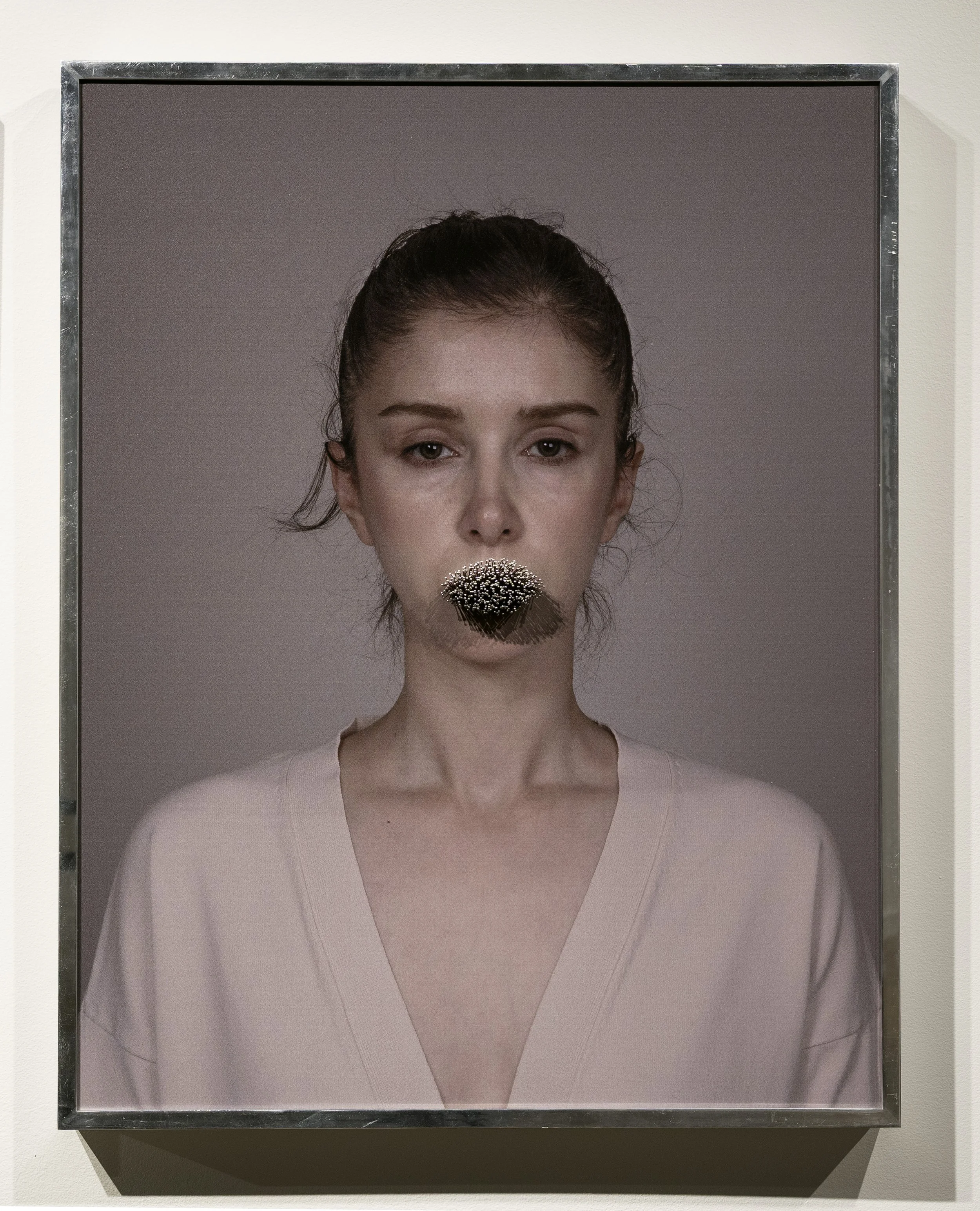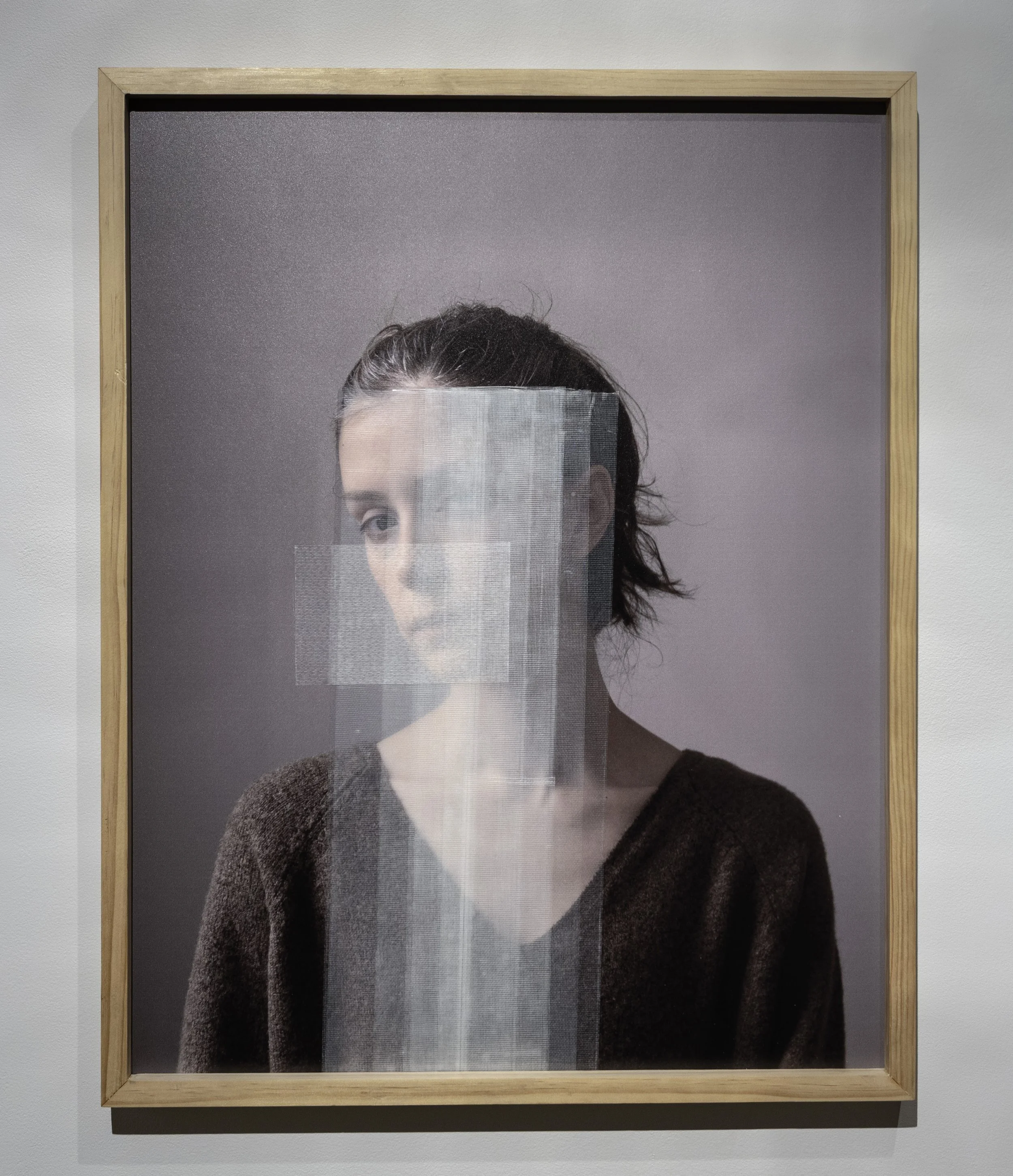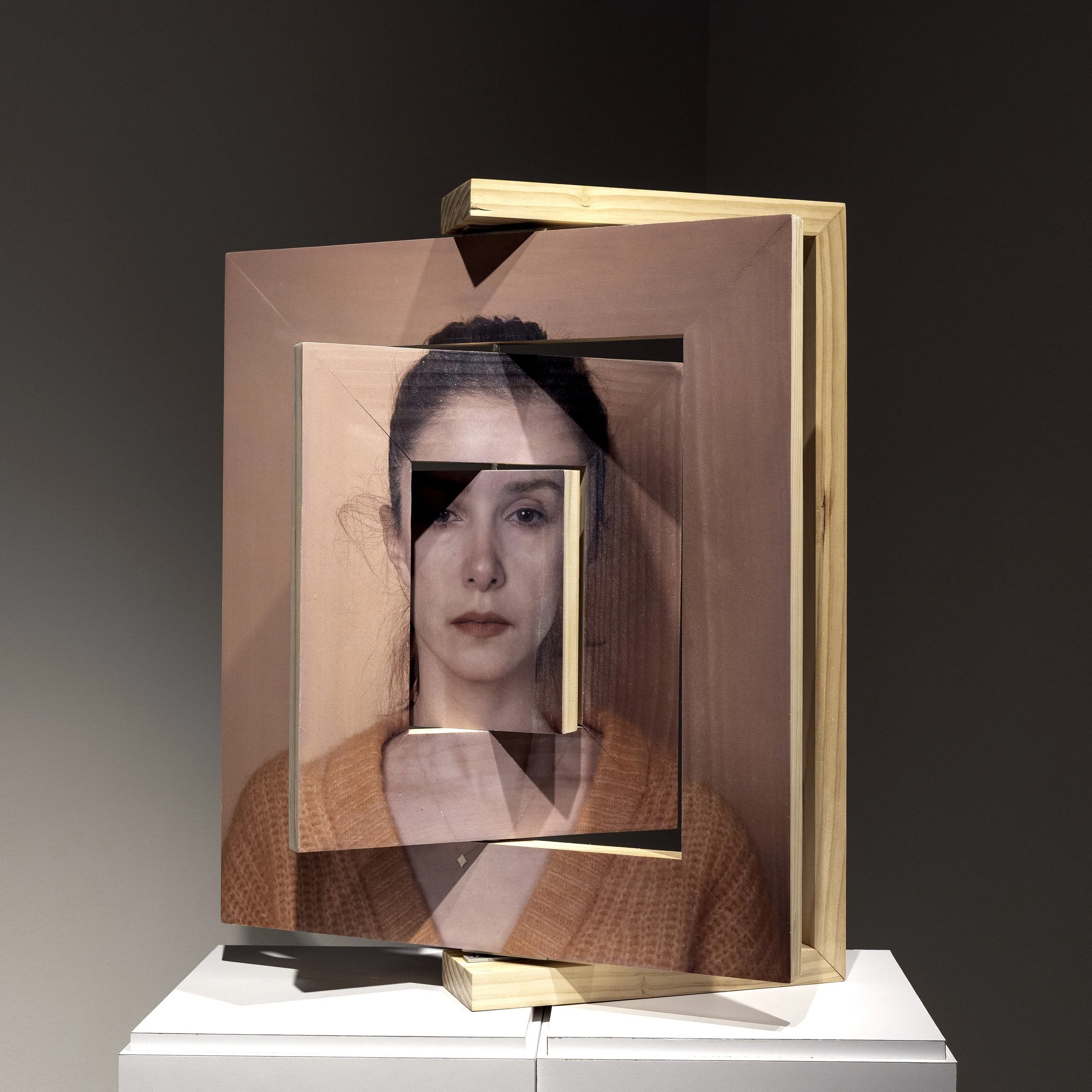in.
in. is an exhibition of experimental works by Hosna Shahramipoor, DC Arts Center, Washington, DC, 2025. in. is curated, titled, designed, installed, lit, and contextualized with writing and promotion by Briget Heidmous.
in. installed at DCAC showing Manifestation of Wave crest (2023) and a partial view of the Candle-clock (Installed 2025, originating 2022). Image by Briget Heidmous.
-
Sunday June 8, 2025
3-4 PM
DCAC, 2438 18th St. NW
Adams Morgan -
Sunday, June 29. 2025
6 - 8 PM
DCAC, 2438 18th St. NW
Adams Morgan -
Gallery Hours
Wednesday - Sunday: 2:00 PM - 7:00 PM2438 18th St. NW
Adams Morgan
in. uncovers an infinite loop of before, during, and after (after, being another during’s before). The exhibition, present in the space as a kind of womb—a place of gestation, of becoming—excavates the layered immigrant experience, as projected through the lens of a woman in the early years of motherhood, grappling with decorum, identity, and autonomy.
Hosna Shahramipoor navigates disparate cultures, telling raw and relatable stories imbued with gallows humor. Wielding self-portraiture as a means to shape-shift, embodying characters, identities, moods, and expressions along the spectrum of femininity.
In the face of convention and dogma, we are invited to wonder:
In what ways does a woman’s persistent gaze challenge social normality?
What if we would rather be wrong than your version of right?
How might we evoke humor as a means of survival?
Who can tell what stories, and how?
Indigenous:
People, and their stories, are inextricably linked to land through ties of genetic and cultural origin.
Hosna Shahramipoor is Persian.
Persian describes both an ethnicity and a language. Persian, or Farsi, is spoken by approximately 120 million people worldwide. Ethnically Persian people are Indo-European living primarily in Iran, Afghanistan, and Tajikistan; however, this ethnic identity extends to anyone descended from the Persian Empire.
International:
Shahramipoor emigrated from Tehran, Iran, to The States in 2017.
After immigrating, the artist’s projects begin to show signs of cultural interweavings. Signaling overlapping experiences, connecting and interrogating, who one has been and who one might become. Concretizing the immigrant experience of leaving, entering, and participating in society as an outsider on the inside.
Intersections:
Observations of intersection are informed by known dissonance.
Living between two regions, each at odds with the other, can make differences readily apparent and similarities harder to find.
In conversation, Shahramipoor shares notable incongruences between life in Iran and life in Washington, DC. The headline being: The social nexus of life in the United States tends towards school, work, and the nuclear family rather than extended familial groups and neighborhoods.
A cultural difference highlighting solitude and individual identity.
Through it all, her work finds its place, establishing kinship within the language of art as protest. A language prevalent among women seeking reform, autonomy, and independence under conservative governmental rule globally.
However, away from the social requirements of life in Tehran, Shahramipoor presents subversive notions with increasing intensity.
Indomitable:
in. installed at DCAC, 2025 showing a Cut through (2022) and Testimony (2025).
A being so powerful that they cannot be controlled. They cannot be defeated.
Unwavering eye contact is present throughout the exhibition, even in places where it might not be immediately noticeable, and it reaches us where we are—eye to eye with a formidable character.
In advocacy to be seen, in protest against mandatory hijab laws, Testimony (2025), with eyes revealed by cut-away masking tape and hair in full view. The piece speaks up for women who have been lost to state-sanctioned femicide, women like Masha Amini, who was killed by police in Tehran, Iran (2022) for incorrectly wearing a hijab.
Testimony, 2025
Digital print on hardboard, framed with glass
28×28×2 framed
In A Cut through (2022), we are face-to-face with Shahramipoor as Bibi Aisha, the Afghan woman who had her nose “hacked off” by her husband’s brother after she attempted to escape an abusive marriage, a marriage she was forced into at the age of fourteen. She was left for dead, but survived.
a Cut through, 2022
Digital print on aluminum, manipulated with fiber.
28×22×3 framed
A woman. A survivor.
And a woman who survives is (all women who survive are) a threat to all people and systems that seek to dehumanize them.
Insensitive:
Combating hopelessness with humor may seem insensitive, but it is a language of survival.
Gallows Humor is prevalent throughout the exhibition. Being flippant is a form of coping, a poetic tool employable exclusively by those who have had similar or shared experiences. Survival is layered.
Surface materials and images hint at the multiple mental and emotional processes existing behind an outward expression. The structural layers hint at masking in the cross-cultural sense (known as code-switching) but reveal cracks in the armor of assimilation. There is a whole and wild being behind a demure facade. A notion made palpable in Duality (2025).
Duality, 2025
Digital print, manipulated
31×27 framed
Shahramipoor takes us close to despair and pushes us through the feeling with absurdity exemplified in the Manifestation of Wave crest (2023), a portrait of the artist post-pardum, with a gaping, comically tidy wound.
in. installed at DCAC showing Manifestation of Wave crest (2023) and a partial view of the Candle-clock (Installed 2025, originating 2022).
Infinity:
Women, and those who experience pregnancy–essentially womb havers who become pregnant– wax into pregnancy, become fully pregnant, and wane into parenthood.
in. installed at DCAC showing Manifestation of Wave crest (2023), the Candle-clock (Installed 2025, originating (2022-23), and a Cut through (2022).
the Candle-clock (installed, 2025) denotes the 40 weeks of gestation typical of humans, exemplifying the precariousness of pregnancy.
in. installed at DCAC the Candle-clock (Installed 2025, originating (2022-23).
Parents navigate infinite cycles of expansion and contraction as it pertains to their own identity and the developmental stage of their children. With each child, a parent travels along two orbits, around two nodes: The Self and The Child.
Having been made a parent through childbirth, the artist turns to explorations of personal identity.
Incarnation:
The artist offers a glimpse into self-liberation, internal configurations, and the vulnerability of embodiment.
Each self-portrait is an avatar—a version of the artist, a version of us all. Tensions emerging from culture and conditioning clash with the desire to become and the exertion required for self-actualization.
The viewer is invited to maintain prolonged eye contact, to stare, and to make sense of the subtlety in expression, material, and composition.
in. installed at DCAC the Candle-clock (Installed 2025, originating (2022-23), Manifestation of Wave crest (2023), Offset (2025), and Muzzle (2025).
Offset (2025) considers multiplicity —the many faces and experiences hidden behind a blank look, or perhaps the dreaded infinite mirroring of a Zoom meeting gone wrong.
Offset, 2025
Digital print, manipulated with prints, magnets, and glue.
23×22×7 framed
Muzzle (2025) stifles.
Muzzle, 2025
Digital print, manipulated with pins
28×22×45 framed
Obscured (2025) materializes as a bandage, a translucent wall behind which healing, destruction, and infinite possibilities might occur.
Obscured, 2025
Digital print, manipulated with tape.
28×22 framed
Inconclusive:
Making no value judgments about personal choice, Hosna Shahramipoor makes a visual language for exploring identity and beliefs readily available.
The exhibition and the works chosen emerge in a moment when women are being stripped of autonomy and put in harm's way by institutional patriarchy perpetuated by governmental and interpersonal systems, around the world. Patriarchal systems are harmful to all, disproportionately so to women.
Across nations and continents, regardless of race, ethnicity, or cultural identity, women and allies of women’s liberation movements are fortifying themselves. And when victory feels improbable, we hold one another.
in. stands in the face of injustice, transmuting hardship.
Rounding around, 2022
Kinetic sculpture, digital print adhered to wood.
20×2×5


